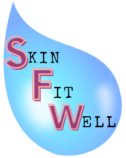Fast-beating heart, sweaty palms, queasy stomach. Anxiety is not fun. And it’s something that millions of people experience on a daily basis. Another common ailment, acne, may be connected. More and more, researchers find that the emotional component of acne is very real and can affect it in ways that are not yet completely understood. Anxiety is one issue that can flare acne and contribute to inflammation in the skin.
Table of Contents
What Are The Symptoms of Anxiety?
Anyone who experiences anxious feelings understands that it is not a good feeling. However, people may experience these feelings differently. For example, one person may feel anxious which causes them to sweat profusely. Another person may go ice cold when facing an anxiety-inducing situation.
Common symptoms of anxiety include feeling irritable, restless, constantly worried, and fatigued. Sometimes these feelings manifest themselves in the form of headaches, body aches, loss of appetite, and inability to sleep well.
The causes of anxiety vary. It could stem from a stressful job, rocky relationship, family issues, or anything that may stress you out.
Stress plays an integral part in feelings of anxiety. Things that are stressful tend to make us feel fearful, worried, and irritable. This is how many of us deal with stress. We feel anxiety from it.
How Does Anxiety Affect The Skin?
As mentioned previously, stress is an important part of understanding anxiety. Feelings of anxiety and stress can increase cortisol levels in the body.
Cortisol is a hormone that is secreted in times of stress. The increase in this hormone elevates sebum production and a multitude of other skin issues.
An increase in sebum production on the skin is one contributing factor to acne formation. When excess sebum occurs, the skin’s hair follicles become blocked with sebum and dead skin cells which cause an inflammatory reaction and subsequently, an acne breakout.
Cortisol levels stimulate inflammatory molecules such as IL-6, as well as other cytokines (substances that play a role in immune function) that cause inflammatory reactions.
Stress can also increase epinephrine. This is a hormone secreted by glands in the body in times of stress, especially during a “fight or flight” reaction. It affects heart rate and breathing.
In terms of the skin, epinephrine actually causes an increase in calcium production in the skin, which affects skin proliferation and differentiation. Proliferation is the creation of more skin cells and differentiation involves the changes in those skin cells to have specific functions. Due to this, epinephrine may have an effect on the health of the epidermis.
Pro-inflammatory cytokines are expressed in those suffering from psoriasis. These cytokines are induced by stress, anxiety, and other psychological issues stemming from emotional and physical stress on the body. They exacerbate this skin condition.
Substance P is a compound involved with pain and stress responses. It has been shown to be elevated near sebaceous glands in acne sufferers, suggesting that anxiety and stress may exacerbate acne conditions and cause increased amounts of inflammation in the skin.
Can Anxiety Cause Rashes On The Body?
Due to the high amount of inflammation that is caused in times of stress and anxiety (such as elevated levels of Substance P, inflammatory cytokines, and cortisol), it is very possible to have rashes on the body in response to anxious feelings.
Stress hives are breakouts of round bumps on the skin when the body becomes stressed or anxious. They are red, raised bumps that can appear on the face, neck, and other parts of the body.
Since the permeability barrier of the skin becomes compromised in times of stress, the skin is more prone to inflammation, rashes and other skin disorders.
What Are Anxiety Marks On Your Neck?
When we experience feelings of stress and anxiety, the body produces an inflammatory reaction. With this reaction comes a fast-beating heart and sweaty palms. Overall, this contributes to heat in the body. When the body becomes heated, it can cause red splotches on the skin, especially around the neck area. This is caused by increased blood circulation. The skin around the neck is fairly thin, and easy to bruise, become inflamed, and/or show red spots easily.
Where Is Stress Acne Located?

Stress and anxiety acne are primarily caused by fluctuations in hormones and other substances that are involved with the inflammatory response in the body.
Often, higher androgen hormones in the body can cause an increase in feelings of anxiety. Therefore, it may not necessarily be the anxiety causing the acne, but it is a result of an increase in androgens.
Hyperandrogenism can cause increased sebum production and inflammation in the body which can lead to acne breakouts. Due to this hormonal imbalance, this type of acne is often found on the jawline and chin areas. There are lots of oil glands located in these areas and significant fluctuations in hormones that increase sebum production can cause breakouts in these areas.
How Do I Get Rid Of Stress and Anxiety Acne?
The main culprit of most stress or anxiety acne involves inflammatory reactions in the body. Therefore, the main solution is to do everything you can, both internally and externally, to reduce inflammation in the body.
This involves eating a healthy diet. Consume foods that are high in antioxidants and are anti-inflammatory. This includes blueberries, raspberries, leafy greens, fatty fish like salmon, and nuts.
Exercise regularly to not only reduce inflammation, but improve cardiovascular health, and significantly improve mental health, clarity, and reduce anxiety.
When it comes to skincare, ensure you incorporate skincare ingredients that are anti-inflammatory and brightening to reduce acne breakouts.
This involves using ingredients like niacinamide, and other ingredients to improve your skin barrier. You can incorporate natural ingredients like turmeric which is anti-inflammatory, as well as occlusives like Vaseline to support the skin’s moisture barrier and reduce post-inflammatory erythema in the skin.
References

